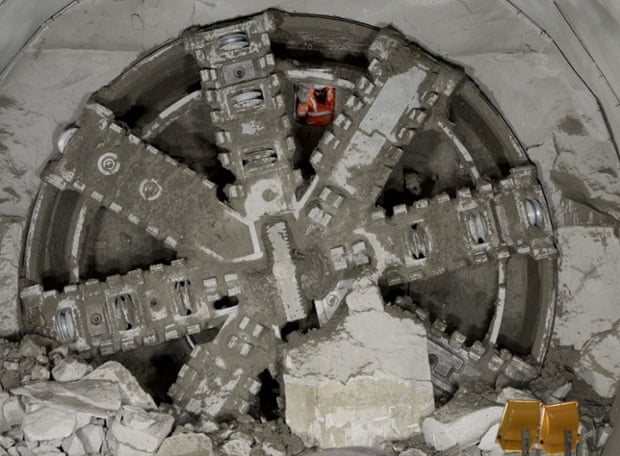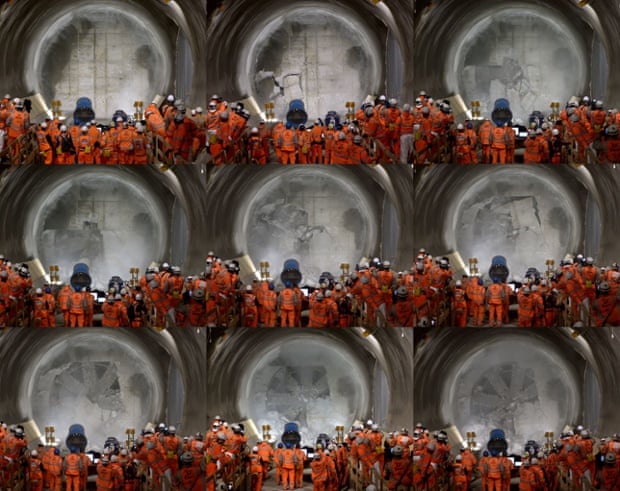theguardian

Tunnelling technology has moved on somewhat since then, but the crew of 20 on each tunnel-boring machine still have an uncomfortable, difficult task, working 12-hour shifts around the clock. Their workplace is essentially a mobile, underground factory, located claustrophobically at what was, until the breakthrough, a 7km-long dead end. Behind the slowly turning cutter head is a 148-metre-long train of hydraulic rams, control rooms, conveyors, piping and steel walkways, creating a tunnel and laying tracks while spewing out the London clay behind. Seated at a computer console near the front, a controller monitors an array of panels to guide the machine forward, a 1,000-tonne monster that must not deviate inches from its precise path through a subterranean warren.
Its journey, of around 100 metres a week on average, takes place in 1.6 metre steps: the width of the concrete tunnel segments that are funnelled to the front when the drill has eaten out enough space. In the noisiest, dirtiest and trickiest part of the job, the teams ensure that the 3.5 tonne blocks are swung cleanly into place by Elizabeth’s hydraulic arms, to be grouted and bolted to create a new ring of tunnel, from which the machine can push on again.
A tunnelling breakthrough is always a moment of celebration for the crew, as well as one of relief for Crossrail’s engineers and architects. But for the machines, they can often mean the end: like male bees, climaxing and perishing. Elizabeth will have one last push to Farringdon, 750m further west, where her steel shell will be subsumed into the tunnel lining, although much of her innards will be stripped out and live to drill another day. Some of the other seven boring machines have reached their final resting place underground. Phyllis, having made it to the same destination from Paddington in the west, was steered irreversibly into the earth, her shell and cutter head encased in concrete and buried with a time capsule in Charterhouse Square for future archaeologists to uncover.
The chief executive of Crossrail, Andrew Wolstenholme, said: “We are now on the final countdown to the big east-west breakthrough at Farringdon, which will link all of Crossrail’s tunnels for the first time. This is a phenomenal feat of civil engineering that London can be justifiably proud of. The next challenge is to implement railway systems across the route, keeping the project on time and within budget.”

An academy set up as part of Crossrail is expected to feed a new generation of skill British tunnelling workers into projects such as HS2 – and, in London’s next big ambitious project being increasingly championed by transport planners, Crossrail 2.


